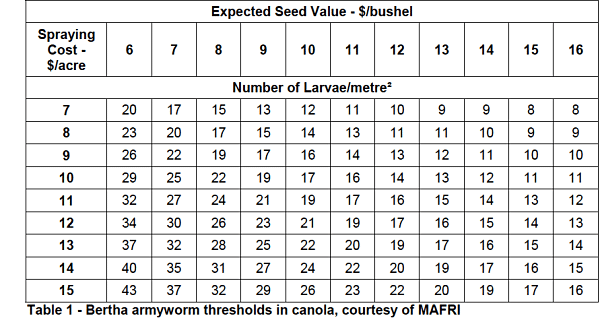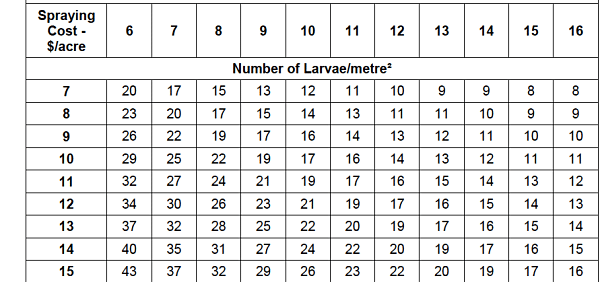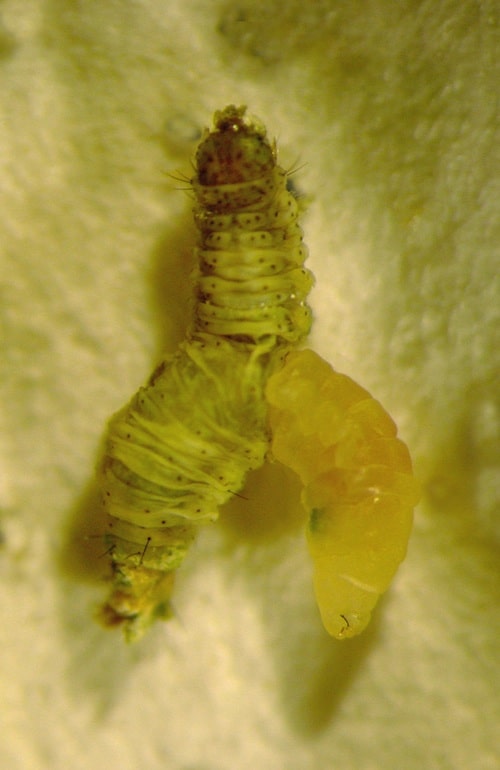Station hosts:
Adam Blake, University of Alberta
Lloyd Dosdall, University of Alberta
Scott Meers, Alberta Agriculture and Rural Development
Diamondback moth adults fly into Western Canada each summer to lay eggs in canola. Within two weeks, the eggs hatch and larvae start feeding.
Two natural enemies — Diadegma and Cotesia — make the trip with them. These wasps lay eggs inside diamondback larvae. When the larvae hatch, they feed on the diamondback moth larvae from the inside out, killing them. (See the photo below.)
Bertha armyworm overwinters here and has a few natural enemies. They are an orange wasp called Banchus, which lays eggs in the bertha armyworm, and Tachinid flies, which lay eggs on the backs of bertha armyworms. Tachinid eggs hatch within minutes, and the tiny larvae bore into the bertha’s body. When these two natural parasitoids reach levels where they’re attacking 60% of the bertha population, we can expect to see bertha populations drop the following year and enter the downward side of their cycle.
Growers cannot expect natural enemies to provide enough immediate control to reduce the pest threat to canola in that year. Growers will still have to spray if economic thresholds are reached. The key is to pay attention to thresholds and spray only when necessary. This will help maintain the natural enemy numbers. (Bertha armyworm spray thresholds are pasted below.)
There is lots of insect activity in fields. Insecticide sprays stop all of it — the good and the bad.

- A Cotesia wasp larva emerges from a diamondback moth larva. Adult Cotesia wasps lay their eggs in diamondback moth larvae, and each hatched feeds on its host, killing it. Source: Lloyd Dosdall, U of A


